Imagine your hospital’s website being as popular as the latest viral cat video. That’s the power of effective digital marketing in the healthcare sector. Today, with patients increasingly turning to the internet for health-related information, establishing a robust online presence is no longer just an option for hospitals; it’s necessary. Here at Plerdy, we understand this shift and recognize the vital role digital marketing plays in connecting hospitals with their patients. This article dives into the top eight digital marketing strategies that can transform your hospital’s online engagement, ensuring that your healthcare services don’t just get noticed but truly stand out in the digital arena.

Understanding the Digital Landscape in Healthcare Marketing
Nearly 80% of internet users search for health information online, highlighting the pivotal role of digital marketing in healthcare. The digital landscape in healthcare isn’t merely evolving; it’s revolutionizing patient care and necessitates that hospitals not only adapt but also excel in digital healthcare marketing to meet patients’ needs where they are most active: online.
The Evolving Patient Journey in Digital Healthcare
In the era of digital healthcare, the patient journey has undergone a significant transformation. The reliance on traditional sources like doctors and physical medical books has been supplemented by the ease of accessing health resources with just a few clicks. Pew Research Center reports that most American adults now turn to the web for health information, marking a critical shift in how patients engage with healthcare providers. This digital transition compels hospitals to optimize their online presence, making digital marketing a key strategy to ensure they are the first credible source patients encounter online in the healthcare sector.
Digital Versus Traditional Marketing in Healthcare
While billboards and print ads are still important, digital healthcare marketing is more targeted. Digital marketing tools enable hospitals to target specific demographics, monitor the efficacy of their campaigns, and engage directly with patients. For example, a Google study reveals that search engine ads can bolster brand awareness by 80%. This data shows that hospitals must use digital marketing to be competitive and visible in online healthcare.
When it comes to healthcare marketing in the digital age, it is not enough to simply have an online presence; you must also carefully position your hospital to be the go-to resource for health-conscious internet users looking for information. By embracing the digital evolution of the patient journey and capitalizing on the strengths of digital over traditional marketing, hospitals can effectively reach and engage with their patients in this digital-dominated era.
Leveraging SEO for Enhanced Visibility in Healthcare Digital Marketing
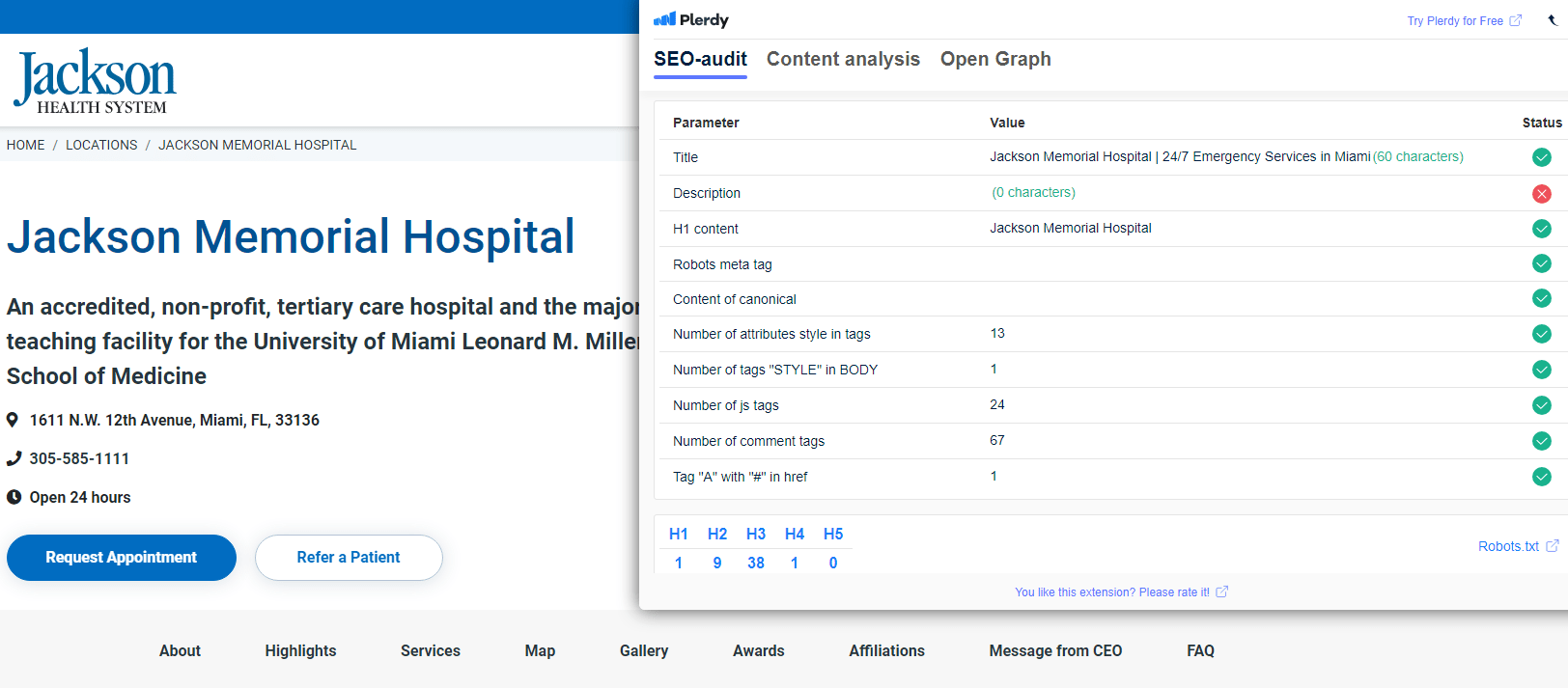
In the expansive digital realm of the internet, a hospital must do more than exist online; it must ensure its website achieves prominence in search engine results. This is where savvy SEO (Search Engine Optimization) becomes indispensable in healthcare digital marketing. It’s not merely about having an online presence; it’s crucial to be easily discoverable.
Keyword Optimization in Healthcare Digital Marketing
Keywords are at the core of SEO and, consequently, in healthcare digital marketing. These are the specific phrases and terms potential patients utilize when searching for healthcare services. Integrating these keywords into your hospital’s website content is akin to laying out a digital map that guides both search engines and users to your site. Using phrases like ‘best cardiac care in [city]’ or ‘affordable pediatric services near me’ can vastly amplify your visibility in those queries. In healthcare digital marketing, strategically using relevant and service-specific keywords is fundamental.
Building Online Trust through SEO in Healthcare Marketing
SEO transcends beyond mere keyword utilization; it’s instrumental in building online trust, a crucial aspect of healthcare digital marketing. Google and other search engines prefer authoritative, up-to-date, and user-friendly websites. In healthcare digital marketing, this means prioritizing high-quality content creation, such as educational blog posts, health tips, and patient testimonials. This tells search engines your hospital’s website is trustworthy. Additionally, ensuring that your website is mobile-responsive and has a quick load time enhances the user experience, further elevating your SEO standing.
Leveraging SEO is pivotal for hospitals aspiring to heightened digital visibility in healthcare marketing. It goes beyond just embedding keywords; it involves curating a user-centric online experience that search engines recognize and value. An adeptly executed SEO strategy in healthcare digital marketing does more than garner more views; it establishes enduring trust and authority in the digital healthcare space.
Content Marketing: Educating and Engaging Patients
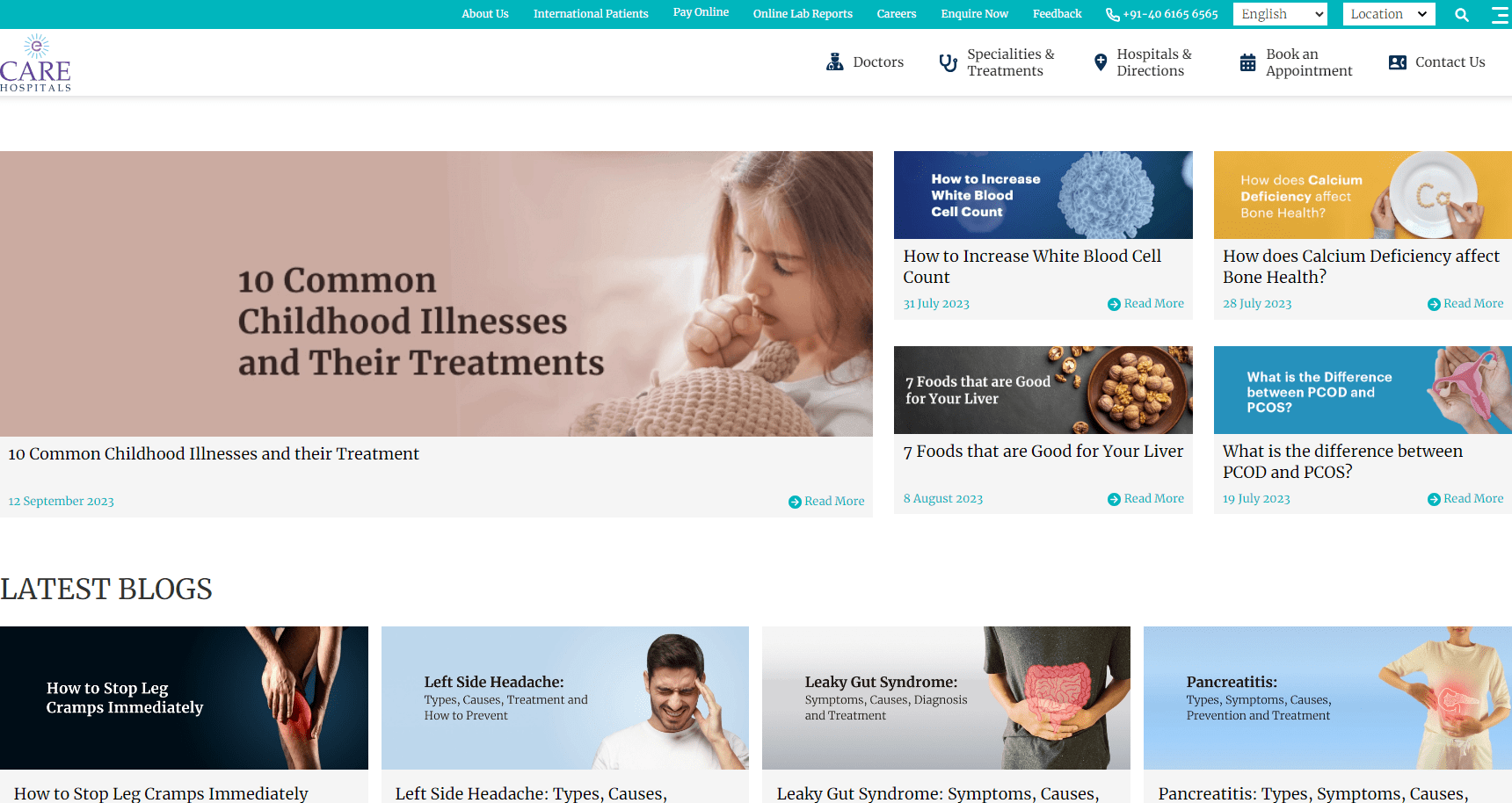
In the digital age, content is king, especially for hospitals striving to connect with their patients. Through content marketing, hospitals can educate and engage their audience, establishing themselves as trusted authorities in healthcare.
Types of Content and Their Uses
The various content types available offer multiple ways to reach and engage different patient demographics. Blog posts can provide detailed health guides, answer common patient queries, and offer wellness tips. Conversely, videos are excellent for explaining complex medical procedures in an understandable way, which can be particularly reassuring for patients facing surgery. Infographics can simplify and visually represent health data or statistics, making it easier for patients to digest and remember. By mixing these formats, hospitals can cater to diverse preferences, ensuring that information is accessible and engaging for all.
Developing a Content Calendar
A content calendar is crucial for consistent and effective engagement. This schedule should align with health awareness months, hospital events, and seasonal health issues, ensuring that content is timely and relevant. For example, heart health tips can be featured in February, coinciding with American Heart Month. A well-planned calendar keeps your content strategy organized and ensures a steady flow of information, keeping patients informed and engaged throughout the year.
Content marketing is a powerful tool for hospitals to educate and engage patients. Hospitals can effectively communicate health messages and build trust with their audience by offering a mix of informative and visually appealing content and organizing it through a well-thought-out calendar.”
Social Media Strategies for Hospitals in Digital Marketing
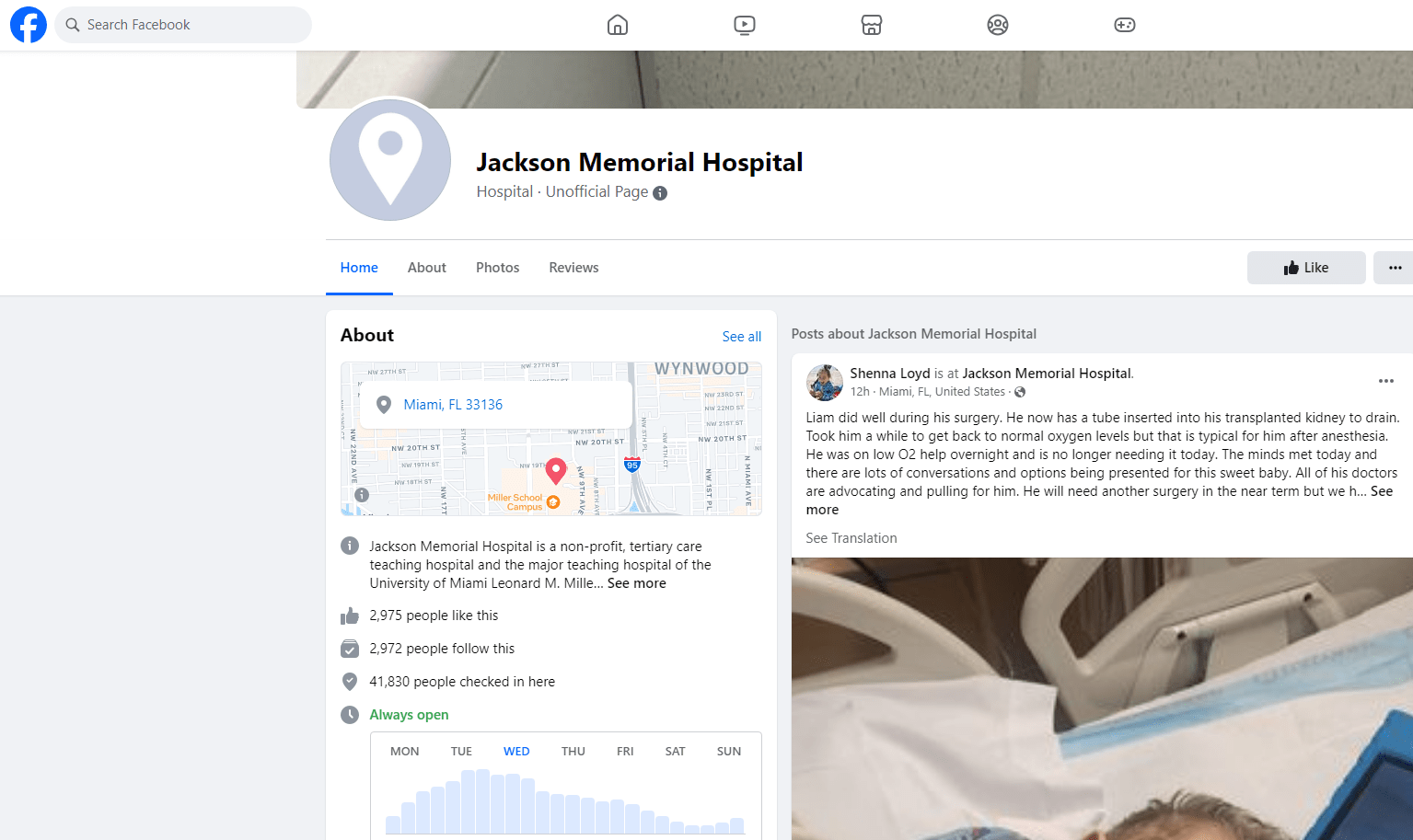
In digital marketing, hospitals need social media to communicate with their communities. The impact of a hospital’s social media presence in today’s digital world is significant, offering a dynamic way to connect with patients and disseminate vital health information.
Choosing the Right Platforms for Hospital Digital Marketing
Not all social media platforms offer equal value in digital marketing for healthcare. Hospitals must pinpoint where their patients are most active in the digital landscape. Health recommendations, patient stories, and facility updates on Facebook and Instagram are perfect for digital marketing to reach a varied audience, including younger generations. With its professional focus, LinkedIn is superb for disseminating research, celebrating hospital achievements, and appealing to healthcare professionals. The key in digital marketing for hospitals is selecting a platform mix that resonates effectively with your target audience.
Content Ideas and Engagement Strategies in Digital Marketing
For hospitals navigating digital marketing, social media content should be engaging and educational. You may make a stronger connection with your audience by sharing personal success stories, health suggestions, and glimpses into how the hospital operates. Interactive elements like doctor Q&As, live health presentations, and polls can improve digital marketing engagement. Prompt responses to comments and messages are crucial in building trust and fostering community, a vital aspect of effective digital marketing for hospitals.
In digital marketing, social media helps hospitals engage with patients and the community. By choosing appropriate platforms and crafting content that resonates with their audience, hospitals can amplify their online presence and solidify their reputation as trusted healthcare providers in the digital age.
Email Marketing for Patient Retention
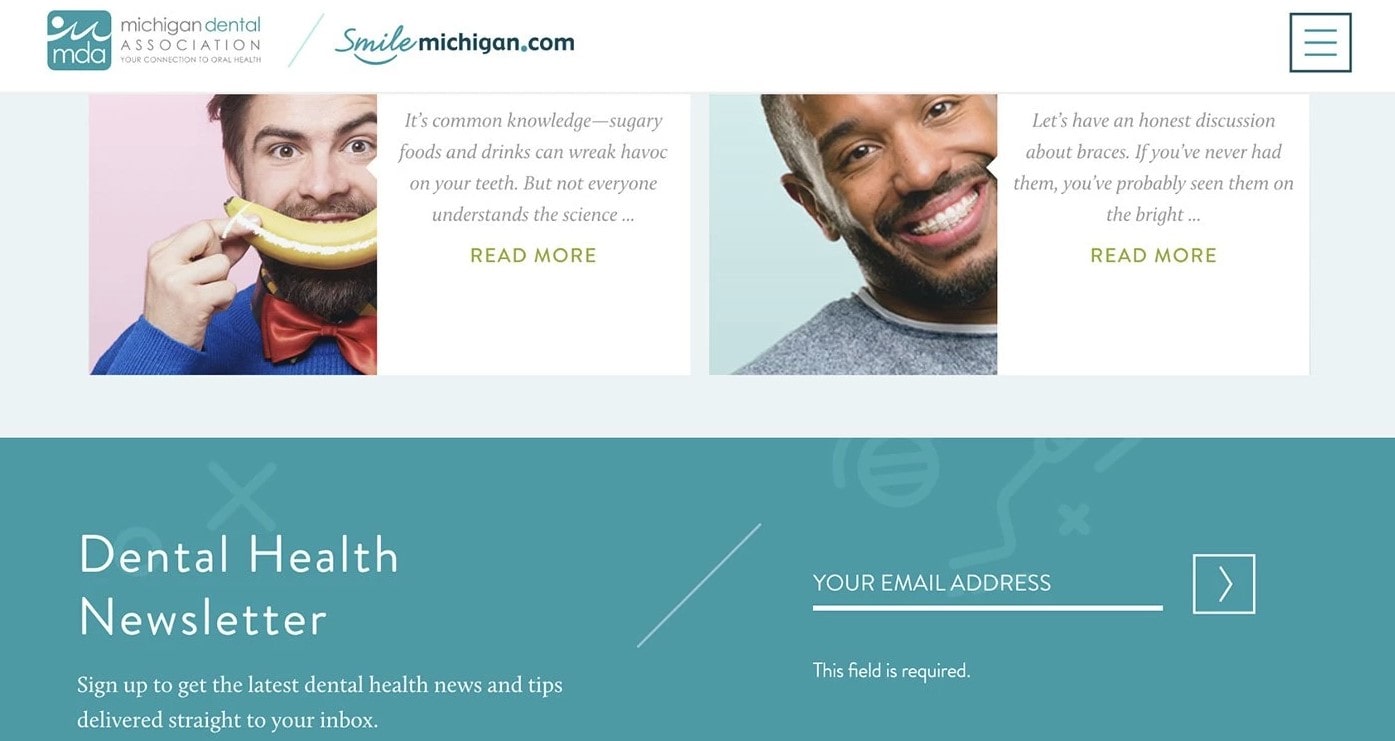
Email is still an effective way for hospitals to stay in touch with their patients in this digital age. Effective email marketing can transform hospitals’ communication, fostering patient loyalty and retention.
Building an Email List
The foundation of email marketing is a robust email list. Hospitals can build this list through various methods, such as during patient registration, on their website via newsletter sign-ups, or at health fairs and other community events. The key is ensuring patients opt-in willingly, understanding the value they’ll receive from these emails. A well-maintained email list allows for targeted communication, ensuring patients receive relevant information that resonates with their health needs and interests.
Creating Effective Email Campaigns
Once you have a list, the next step is to create compelling email campaigns. These can range from monthly newsletters providing health tips and hospital news to personalized emails about upcoming appointments or health check reminders. The content should always be patient-centric, providing value and fostering trust. For example, an email campaign during flu season could include tips for flu prevention, information on vaccine availability, and how to book a vaccination appointment at the hospital. Personalization is key; using the patient’s name and tailoring the content to their known health interests can significantly increase engagement and open rates.
Email marketing is a critical tool for hospitals in the quest for patient retention. By building a comprehensive email list and crafting thoughtful, patient-focused email campaigns, hospitals can keep their patients informed and deepen the patient-hospital relationship, encouraging ongoing engagement and loyalty.
Pay-Per-Click (PPC) Advertising for Immediate Reach

Imagine your hospital appearing at the top of every relevant online search. That’s the immediate impact of Pay-Per-Click (PPC) advertising. In today’s fast-paced digital world, PPC offers hospitals an efficient way to increase visibility and reach potential patients quickly.
Setting Up a PPC Campaign
Setting up a successful PPC campaign involves careful planning and strategy. First, identify the key services and treatments you want to promote, such as specialized surgeries or wellness check-ups. Then, research and select relevant keywords that potential patients will likely use when searching for these services. Utilizing tools like Google AdWords, hospitals can create ads at the top of search results for these keywords. Writing clear, concise ad copy that speaks directly to the patient’s needs is crucial, encouraging them to click through to your website.
Budgeting and Targeting
Effective PPC also requires smart budgeting and targeting. Hospitals must set a budget that reflects their goals and provides a good return on investment. This involves monitoring and adjusting bids on selected keywords and continually analyzing the campaign’s performance. Targeting is equally important; hospitals can target ads based on location, age, and even the type of device used, ensuring they reach the most relevant audience.
For quick online exposure, hospitals can not do better than pay-per-click (PPC) ads. Hospitals can effectively attract new patients and promote their key services with well-planned campaigns, precise targeting, and controlled budgeting.
Utilizing Video Marketing for Greater Engagement
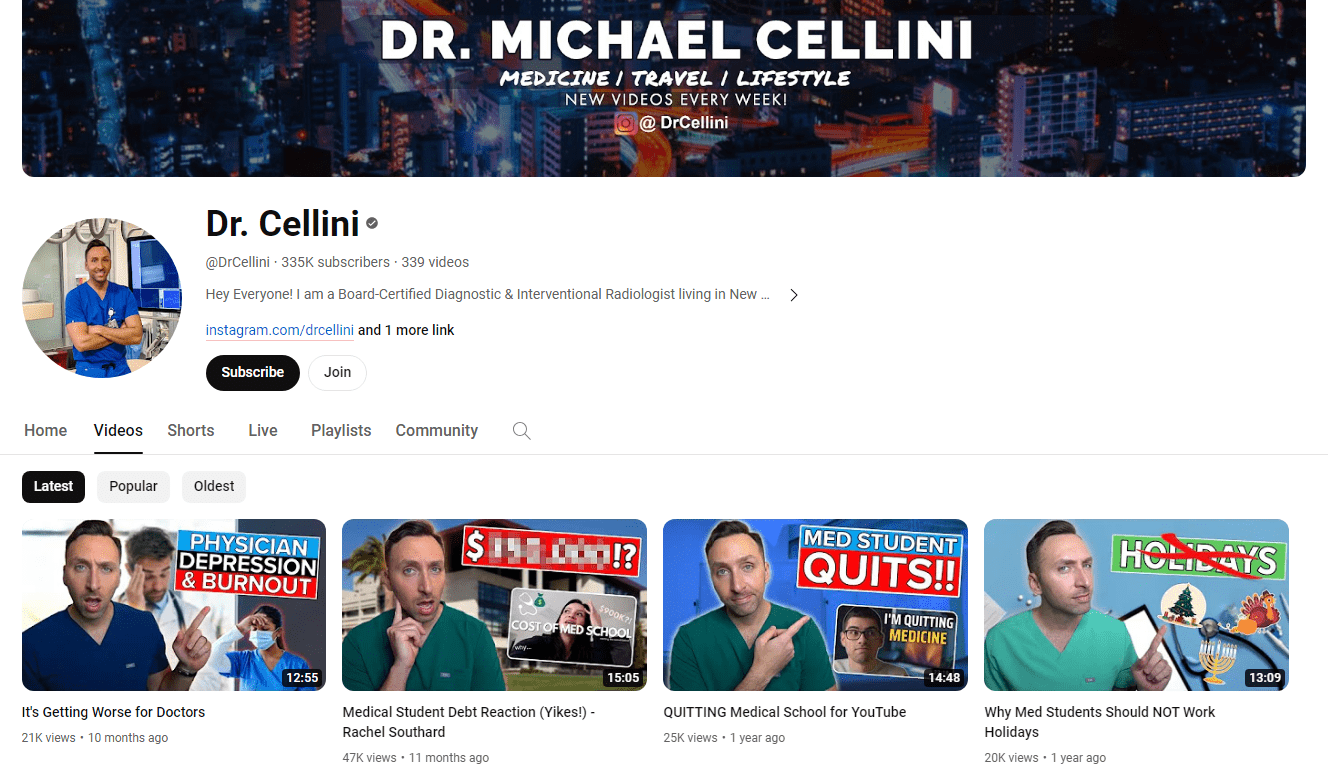
A video could be worth a million in today’s fast-paced digital age when a picture is worth a thousand words. Healthcare video marketing is about more than simply providing material; it is about crafting stories that connect with viewers and keep their attention.
Benefits of Video Marketing
Multifaceted medical information can be simplified using video marketing. It’s particularly effective in healthcare, where patient education and trust are paramount. Videos can showcase patient testimonials, provide virtual tours of the facility, or explain complicated procedures, making the hospital experience less intimidating for patients. Moreover, videos are shareable and can reach a wide audience quickly, increasing the hospital’s visibility and credibility. Video content can attract patients, as HubSpot found that landing page conversion rates can be increased by more than 80% when videos are added.
Video Content Ideas
Creating compelling video content starts with understanding your audience. Educational videos that address common health concerns, FAQs, or wellness tips can be extremely valuable to patients. Videos introducing hospital staff and showcasing their expertise help build a personal connection with the audience. Additionally, hospitals can create content highlighting community involvement or health awareness campaigns, reinforcing their role as healthcare leaders in the community.
Video marketing is a strategic move for hospitals to enhance patient engagement and trust. Hospitals may educate, engage, and communicate better by combining storytelling with visual appeal.
Omnichannel Marketing for a Unified Patient Experience

Omnichannel marketing in healthcare isn’t just a buzzword; it’s a patient-centric approach that unifies patient experiences across all digital and physical touchpoints. This strategy ensures that whether a patient is using a mobile app, browsing a website, or walking into a hospital, they receive a consistent and seamless experience.
Creating a Cohesive Omnichannel Strategy
Developing an omnichannel strategy involves integrating all marketing channels – online and offline – to work in harmony. This means ensuring that messaging, branding, and patient communication are consistent whether a patient reads an email, engages on social media, or visits the hospital. It’s about creating a unified narrative that resonates with patients’ needs and preferences. Data analytics are crucial in understanding patient behaviors across different channels, allowing for more tailored and effective communication.
Integrating Offline and Online Marketing Efforts
Crucial to multichannel marketing is the merging of offline and online marketing initiatives. This could include using traditional advertising to drive traffic to digital platforms or social media campaigns to promote in-person health events. Encouraging a sense of connection and personalization in every engagement with the hospital is the purpose of creating several touchpoints that enhance the patient journey.
Omnichannel marketing is essential for hospitals to provide a unified and holistic patient experience. By seamlessly integrating various marketing channels, hospitals can ensure that every patient interaction, whether online or offline, contributes to a consistent, engaging, and personalized patient journey.
Conclusion
Finally, there is a plethora of opportunity in the expansive world of digital marketing for healthcare. From SEO to omnichannel marketing, each strategy we’ve discussed is a piece of the puzzle in enhancing patient engagement and hospital visibility. Remember, it’s not just about adopting these strategies; it’s about weaving them into a cohesive narrative that speaks to your audience. Curious about more innovative ways to elevate your digital presence? Explore other insightful articles here on Plerdy’s blog. And remember, Plerdy is here to help you navigate the digital marketing journey, turning your online efforts into real-world successes.
